COVID-19 Updates 9/25
September 25, 2020
I hope you are continuing to stay strong because we will get through this together. Here is the latest on COVID-19 data, resources, and words of encouragement from local, national, and world leaders.
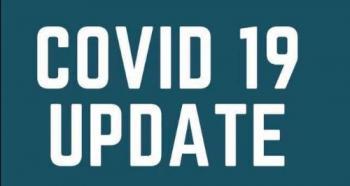
Local and National Data Updates
(Latest Data as of 4:00 PM on Friday, September 25, 2020)
| Confirmed Cases | Deaths | Tests Completed | |
| Worldwide | 32.38 Million | 984,906 | |
| U.S. | 6.96 Million | 202,329 | 108.61 Million |
| Connecticut | 56,587 | 4,501 | 1.51 Million |
| Waterbury | 2,480 | 193 |
For several additional charts and tables containing more data groups, including a town-by-town breakdown of positive cases in each municipality and a breakdown of cases and deaths among age groups, click here.
Positivity for the Future
“These are troubling times, there is much to think about as families get on with their lives and their livelihoods. Please pay special attention to the young children and their needs especially during this pandemic. The new educational norm requires close attention by parents and guardians of all the young ones, mental health matters for the well-being of all.” - State Rep. Geraldo Reyes
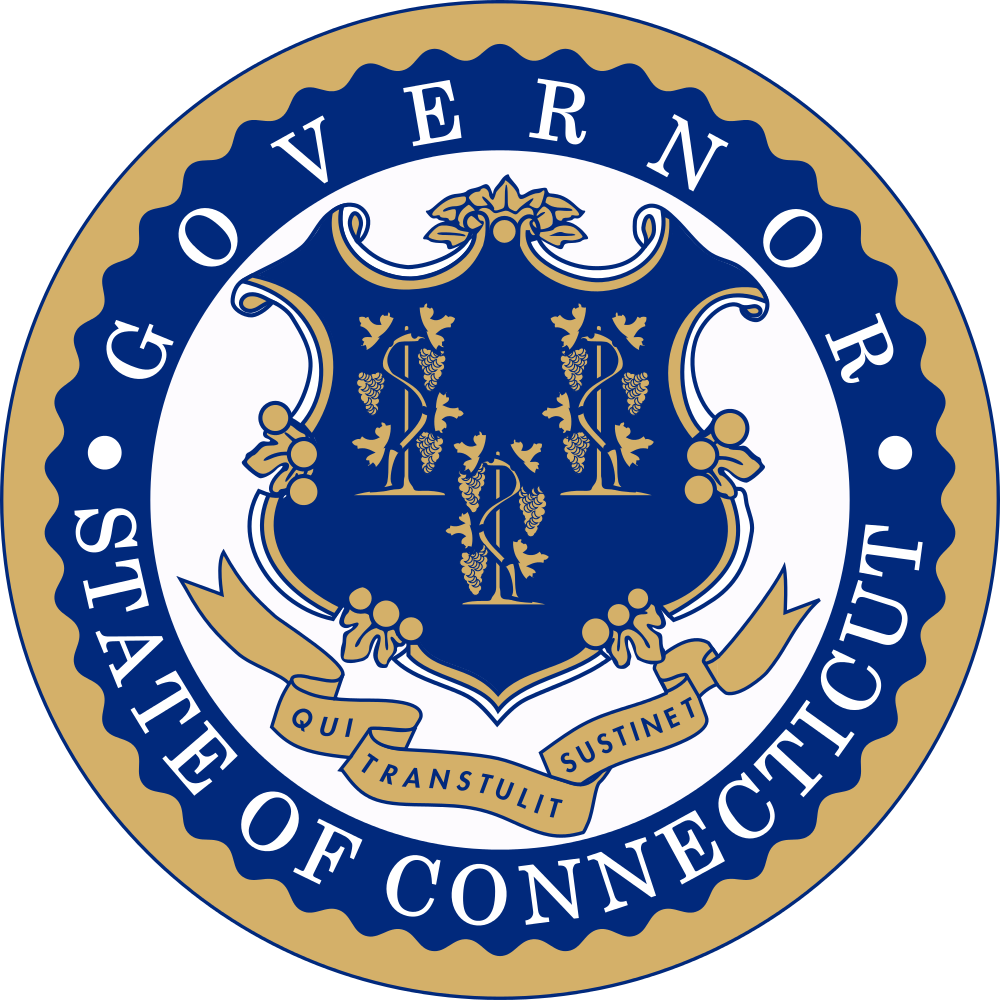
Governor Lamont signs 72nd executive order to mitigate the spread of COVID-19
Governor Lamont last night signed another executive order – the 72nd since he enacted the emergency declarations – that builds upon his efforts to encourage mitigation strategies that slow down transmission of the virus. Executive Order No. 9D enacts the following provisions:
- Extension of prohibition on sale of alcohol by certain permittees without the sale of food: Extends the previously enacted prohibition on the sale of alcohol by certain permittees without the sale of food until at least November 9, 2020.
- Extension of contracting flexibility regulated to student privacy data: Extends the provisions of Executive Order No. 7I, Section 5 through January 31, 2021.
**Download: Governor Lamont's Executive Order No. 9D
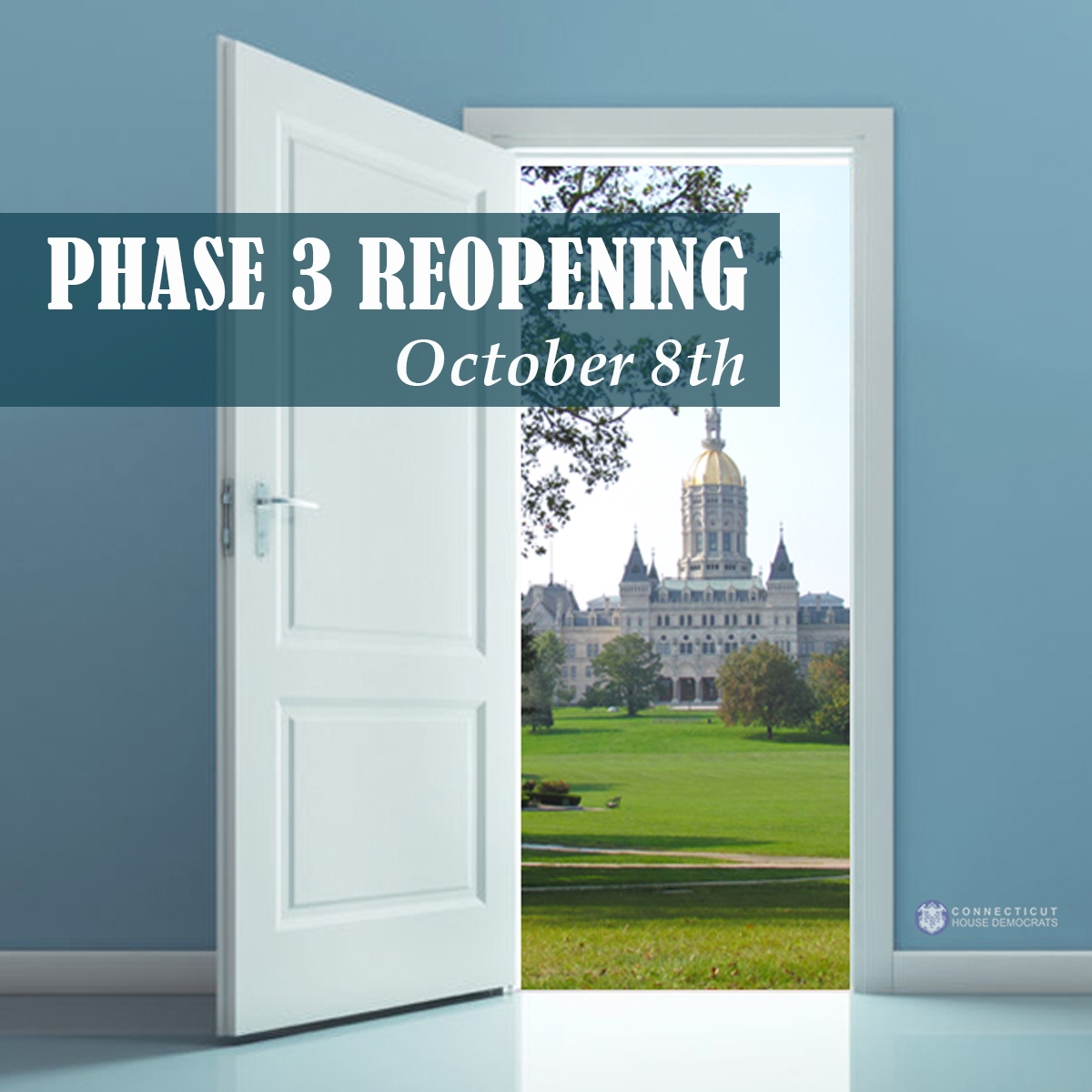
CT Moves Toward Phase 3 Reopening Oct. 8
Connecticut will move into Phase 3 of its reopening plan on Thursday, October 8, 2020. The phase includes easing several restrictions put into place on businesses and gatherings, while continuing state efforts to mitigate the spread of COVID-19.
Business changes in Phase 3 include:
- Increase from 50% to 75% capacity indoors - dependent upon COVID-19 safety requirements - for restaurants, personal services, hair salons, barber shops, and libraries;
- Outdoor event venues will increase from 25% to 50% capacity with masks and social distancing requirements;
- Indoor performing venues will be able to open at 50% capacity with masks and social distancing requirements; and
- Bars and nightclubs will continue to remain closed.
Phase 3 also includes the below changes to the sizes of social gatherings:
|
|
Indoor |
Outdoor |
||
|
|
Phase 3 |
Current |
Phase 3 |
Current |
|
Private – Social and Recreational |
Occurs at commercial establishment / places of business: 50% capacity, capped at 100 people Occurs at private residence: 25 people |
Capped at 25 people |
Capped at 150 people |
Capped at 100 people |
|
Graduations |
50% capacity, capped at 200 Masks and social distancing |
Not allowed |
50% capacity of 6-foot spacing, no cap. Masks and social distancing |
One-time exemption capped at 150 Masks and distancing |
|
Religious |
50% capacity, capped at 200 Masks and social distancing |
25% capacity, capped at 100 people |
50% capacity and 6-foot spacing, no cap. Masks and social distancing |
Capped at 150 people |
More information about Connecticut's reopening plan, as well as guidance for residents, businesses, schools, and government, is available on the state's COVID-19 web site, here.
Individuals can also visit the CT Reopening Center at reopen.ct.gov, to learn more about how the state is developing reopening guidelines.
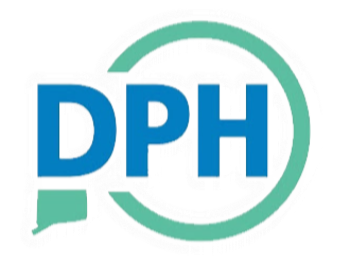
Department of Public Health releases comprehensive guidance and recommendations for all organized sports
The Connecticut Department of Public Health today released comprehensive guidance and recommendations for organized sports, including youth and adult club and private league play. The department had previously released guidance to scholastic athletic leagues in Connecticut concerning fall sports. The guidance is intended to guide local health departments, municipalities, and league organizers in assessing the risk of play, and will be revisited later in the fall or early winter as the COVID-19 pandemic progresses. This guidance is based on a risk assessment for COVID-19 conducted by the National Federation of High School Associations, a national organization governing high school athletics. The guidance includes a description of the risk categories for sports, breaks down the risks of different activity associated with those sports, and makes recommendations for each of those activities.
“The COVID-19 pandemic does not mean all organized sports should stop. In fact, DPH recognizes the importance of physical activity for the health and well-being of everyone during this stressful period,” Acting Public Health Commissioner Dr. Deidre S. Gifford said. “We encourage children and adults to engage in lower-risk physical activities as part of a strategy to stay healthy and cope with this pandemic. Unfortunately, some team sports present a higher risk of transmitting COVID-19 during practice or play, and we recommend that those be either modified or postponed. We want anyone playing organized sports in Connecticut to be aware of the risks for contracting COVID-19, so everyone can make informed decisions. Our overall goal is for people to have fun and compete, keep physically active and fit, and most importantly stay safe and healthy during this pandemic.”
For more information, read the press release issued today by the Department of Public Health.
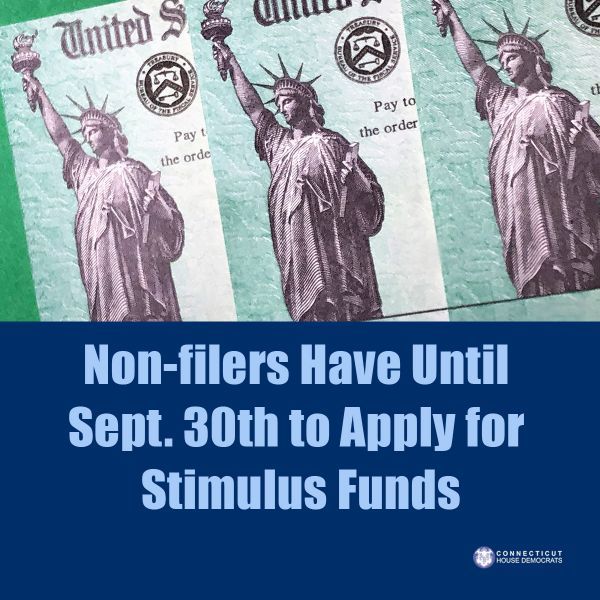
Deadline Approaching for Non-Filers
ATTENTION: IF YOU DO NOT FILE TAXES WITH THE IRS
You may still be entitled to a stimulus payment for your children. But you must apply before September 30. Please note – if you are not claiming any children, the deadline to apply is October 15.
For more info, or to apply, click here for more information.
This money is available to help ease the financial burden for families during this these uncertain times. Please spread the word in your community so those who need support can take advantage.
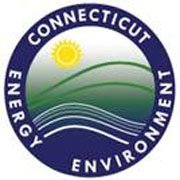
PURA extends COVID-19 Payment Program Enrollment Date
The Connecticut Public Utilities Regulatory Authority (PURA) today announced that it has issued a ruling that will extend the enrollment period for the COVID-19 Payment Program for non-residential utility customers through November 1, 2020. The enrollment period for the program for both residential and non-residential utility customers will now extend through November 1.
PURA is also reminding all residential customers that the “shut-off moratorium” currently in place for state-regulated electric, gas, and water utilities is scheduled to conclude on September 30, 2020. PURA encourages all customers experiencing difficulty paying their utility bills to contact their utility company and ask:
- First, whether the customer is eligible to be “coded hardship.” Special financial assistance programs are available to hardship customers. (For more information, see the Operation Fuel website); and
- Second, if ineligible for hardship status, to be placed on a COVID-19 payment plan.
COVID-19 payment plans are available to any customer requesting financial assistance, without demonstrating financial need; require no initial or down payment; can be up to 24 months in length; waive any fees or interest in the calculation of the monthly payment amount; and facilitate the repayment of the past due balances in addition to the customer’s current monthly bill.
Importantly, any customer enrolled in a COVID-19 payment plan who is current with their payment terms cannot be disconnected even once the shut-off moratoriums.
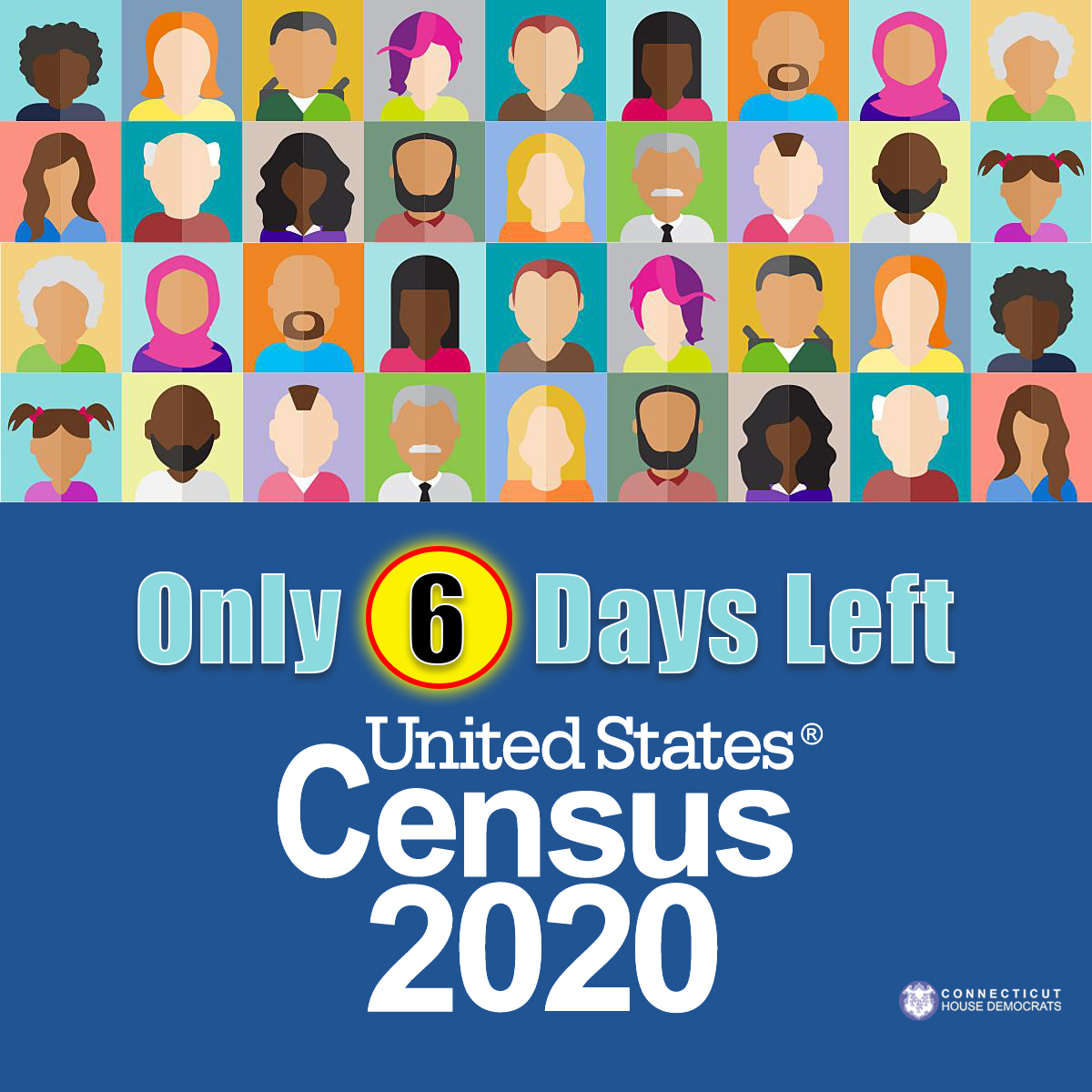
Respond to the 2020 Census
Only 6 days left! Your community is counting on you to get counted. Getting counted will help your community secure funding for health care, education, and infrastructure for the next decade.
If you haven’t taken the census yet, click here.
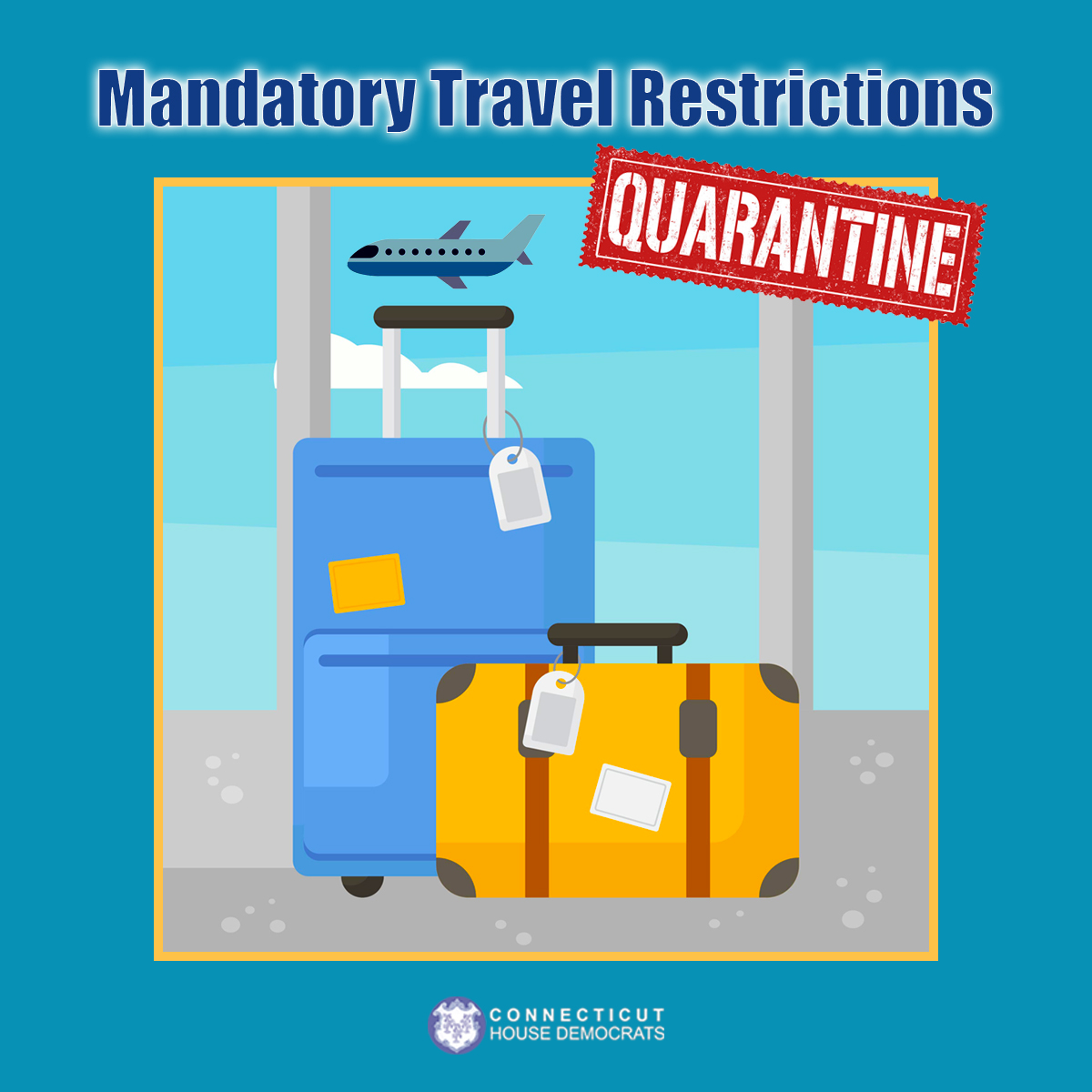
Weekly update to the regional travel advisory: Arizona, Minnesota, Nevada, Rhode Island, and Wyoming meet metrics to qualify
The regional travel advisory between Connecticut, New Jersey, and New York that directs incoming travelers from states with a significant community spread of COVID-19 to self-quarantine for a 14-day period was updated today: Arizona, Minnesota, Nevada, Rhode Island, and Wyoming have been added to the list of impacted locations that have met the metrics to qualify. No areas were removed this week.
The requirement to quarantine applies to any person traveling into Connecticut from a state with a positive case rate higher than 10 per 100,000 residents, or higher than a 10 percent test positivity rate over a 7-day rolling average. It also applies to any person arriving into Connecticut from a country for which the U.S. Centers for Disease Control and Prevention has issued a Level 3 Travel Health Notice.
Anyone arriving to Connecticut from any of the impacted locations is required to fill out a travel health form upon their arrival. The form can be filled out online at ct.gov/travelform.
The list of impacted locations is updated once per week every Tuesday. As of today, the full list of impacted locations under the travel advisory includes:
- Alabama
- Alaska
- Arizona
- Arkansas
- Delaware
- Florida
- Georgia
- Guam
- Idaho
- Illinois
- Indiana
- Iowa
- Kansas
- Kentucky
- Louisiana
- Minnesota
- Mississippi
- Missouri
- Montana
- Nebraska
- Nevada
- North Carolina
- North Dakota
- Oklahoma
- Puerto Rico
- Rhode Island
- South Carolina
- South Dakota
- Tennessee
- Texas
- Utah
- Virginia
- West Virginia
- Wisconsin
- Wyoming
For the most up-to-date information on the regional travel advisory, including an extensive list of frequently asked questions, visit ct.gov/Coronavirus/travel.





